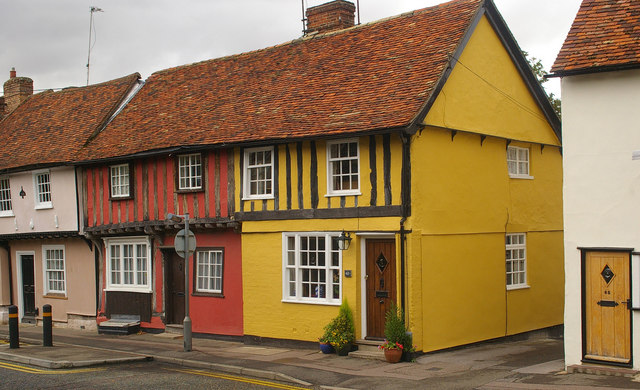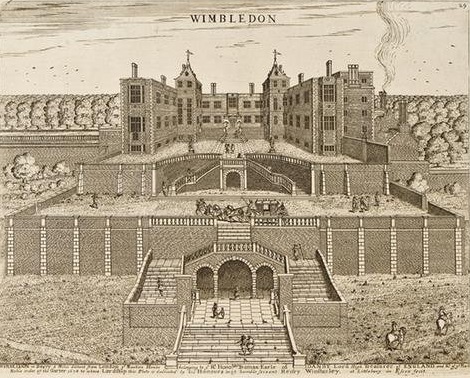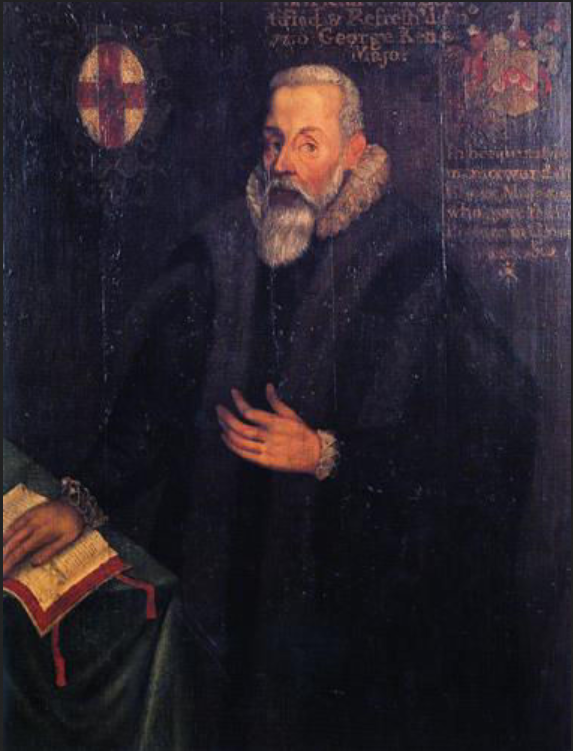|
Littlebury
Littlebury is a village and civil parish in the Uttlesford district, north-west Essex, England. The village is approximately a mile and a half from the market town of Saffron Walden, south from Cambridge, the nearest city, and north-east from the county town and city of Chelmsford. The parish of Littlebury includes the village of Littlebury Green and the hamlets of Catmere End and Chapel Green at the west, and parts of the estate of Audley End at the southeast. The parish had a population of 869 at the 2011 census. History The area has been inhabited since prehistoric times, with Bronze Age tools having been found at Little Chesterford and Iron Age sherds to the east of the village. Ring Hill Fort to the west of Audley End is believed to date from the Iron Age, and there is significant evidence of Roman settlement. The name Littlebury first appears in a 10th-century will as ''lytlan byrig'' and in 1008 as ''Lithanberi''. The village is located on the medieval London to New ... [...More Info...] [...Related Items...] OR: [Wikipedia] [Google] [Baidu] |
Littlebury Green
__NOTOC__ Littlebury Green is a village in the civil parish of Littlebury and the district of Uttlesford in Essex, England. Littlebury Green is one of three settlements, the others Catmere End and Chapel Green, at the west and south-west of Littlebury parish, and subordinate to the parish village of Littlebury near the north-east border with the parish of Saffron Walden. The village is on Littlebury Green Road, west from the town of Saffron Walden, south from the city of Cambridge, and north-east from the county town and city of Chelmsford. The M11 motorway runs north to south east from the village. History During Roman Britain, Littlebury Green was named 'Stretley' after its position on the Ermine Street route towards Chesterford. A 16th-century will bequeathed a house at "Strelly Green commonly called Littlebury Green". '' White's Directory'' mentions the Roman road and of records referring to the settlement as 'Streetly Green' In 1851 Littlebury Green comprised 32 ho ... [...More Info...] [...Related Items...] OR: [Wikipedia] [Google] [Baidu] |
River Cam
The River Cam () is the main river flowing through Cambridge in eastern England. After leaving Cambridge, it flows north and east before joining the River Great Ouse to the south of Ely, at Pope's Corner. The total distance from Cambridge to the sea is about and is navigable for punts, small boats, and rowing craft. The Great Ouse also connects to England's canal system via the Middle Level Navigations and the River Nene. In total, the Cam runs for around from its furthest source (near Debden in Essex) to its confluence with the Great Ouse. Name The original name of the river was the ''Granta'' and (unusually) its present name derives from the city of Cambridge ( ang, Grantebrycge) rather than the other way around: After the city's present name developed in Middle English, the river's name was backformed to match. This was not universally applied, however, and the upper stretch of the river continues to be informally known as the Granta. It has been said''Bedders, Bulldo ... [...More Info...] [...Related Items...] OR: [Wikipedia] [Google] [Baidu] |
The Hundred Parishes
The Hundred Parishes is an area of the East of England with no formal recognition or status, albeit that the concept has the blessing of county and district authorities. It encompasses around 450 square miles (1,100 square kilometres) of northwest Essex, northeast Hertfordshire and southern Cambridgeshire. The area comprises just over 100 administrative parishes, hence its name. It contains over 6,000 listed buildings and many conservation areas, village greens, ancient hedgerows, protected features and a historical pattern of small rural settlements in close proximity to one another. Origins The idea of recognising the area for its special heritage characteristics was originally conceived by local historian and author David Heathcote. A steering group of local historians, conservationists and a local authority representative, spearheaded by the Essex branch of the Campaign to Protect Rural England ( CPRE), progressed the idea and defined a boundary. The name arose in respons ... [...More Info...] [...Related Items...] OR: [Wikipedia] [Google] [Baidu] |
Saffron Walden
Saffron Walden is a market town in the Uttlesford district of Essex, England, north of Bishop's Stortford, south of Cambridge and north of London. It retains a rural appearance and some buildings of the medieval period. The population was 15,504 at the 2011 census. History Archaeological evidence suggests continuous settlement on or near the site of Saffron Walden from at least the Neolithic British Isles, Neolithic period. It is believed that a small Romano-British culture, Romano-British settlement and fort – possibly in the area round Abbey Lane – existed as an outpost of the much larger settlement of Great Chesterford, Cestreforda to the north. After the Norman conquest of England, Norman invasion of 1066, a stone church was built. Walden Castle, dating from about 1140, may have been built on pre-existing fortifications. A priory, Walden Abbey, was founded under the patronage of Geoffrey de Mandeville, 1st Earl of Essex about 1136, on the site of what is now Audley En ... [...More Info...] [...Related Items...] OR: [Wikipedia] [Google] [Baidu] |
Henry Winstanley
Henry Winstanley (31 March 1644 – 27 November 1703) was an English painter, engineer and merchant, who constructed the first Eddystone lighthouse after losing two of his ships on the Eddystone rocks. He died while working on the project during the Great Storm of 1703. Early life and career He was born in Saffron Walden, Essex, and baptised there on 31 March 1644. His father Henry became land steward to the Earl of Suffolk, owner of Audley End House, in 1652, and young Henry also worked at Audley End, first as a porter and then as a secretary. In 1666 Audley End House was bought by Charles II for use as a base when attending Newmarket races, and it became effectively a royal palace. Winstanley developed an interest in engraving after a grand tour of Europe between 1669 and 1674, where he was impressed by Continental architecture and the engravings in which it was portrayed. On his return he is believed to have studied engraving with Wenceslas Hollar, and was employed at A ... [...More Info...] [...Related Items...] OR: [Wikipedia] [Google] [Baidu] |
Thomas Sutton
Thomas Sutton (1532 – 12 December 1611) was an English civil servant and businessman, born in Knaith, Lincolnshire. He is remembered as the founder of the London Charterhouse and of Charterhouse School. Life Sutton was the son of an official of the city of Lincoln, and was educated at Eton College and at St John's College, Cambridge. For much of his life he held the prestigious role of Master of the Ordnance in the North, which meant that he was responsible for military supplies and fortification in the north of England. He also obtained the lease of the manors of Whickham and Gateshead, just south of Newcastle, in 1578, and so gained much of his early wealth from the coal mines in the area and from the sale of this lease five years later. In 1582, he married Elizabeth Dudley, the widow of John Dudley, who was a distant cousin of the earls of Warwick and Leicester, and this marriage more than doubled Sutton's annual rent income. Sutton's connections to the Dudley family were ... [...More Info...] [...Related Items...] OR: [Wikipedia] [Google] [Baidu] |
Samuel Shaw (New Zealand)
Samuel Shaw (1819–?) was a notable New Zealand labour reformer. He was born in Littlebury, Essex, England England is a country that is part of the United Kingdom. It shares land borders with Wales to its west and Scotland to its north. The Irish Sea lies northwest and the Celtic Sea to the southwest. It is separated from continental Europe b ... in about 1819. References 1819 births New Zealand activists English emigrants to New Zealand Year of death missing {{NewZealand-bio-stub ... [...More Info...] [...Related Items...] OR: [Wikipedia] [Google] [Baidu] |
Eddystone Lighthouse
The Eddystone Lighthouse is a lighthouse that is located on the dangerous Eddystone Rocks, south of Rame Head in Cornwall, England. The rocks are submerged below the surface of the sea and are composed of Precambrian gneiss. View at 1:50000 scale The current structure is the fourth to be built on the site. The first lighthouse (Winstanley's) was swept away in a powerful storm, killing its architect and five other men in the process. The second (Rudyard's) stood for fifty years before it burned down. The third (Smeaton's) is renowned because of its influence on lighthouse design and its importance in the development of concrete for building; its upper portions were re-erected in Plymouth as a monument. The first lighthouse, completed in 1699, was the world's first open ocean lighthouse, although the Cordouan Lighthouse off the western French coast preceded it as the first offshore lighthouse. The need for a light The Eddystone Rocks are an extensive reef approximately 12 m ... [...More Info...] [...Related Items...] OR: [Wikipedia] [Google] [Baidu] |
Charles II Of Great Britain
Charles II (29 May 1630 – 6 February 1685) was King of Scotland from 1649 until 1651, and King of England, Scotland and Ireland from the 1660 Restoration of the monarchy until his death in 1685. Charles II was the eldest surviving child of Charles I of England, Scotland and Ireland and Henrietta Maria of France. After Charles I's execution at Whitehall on 30 January 1649, at the climax of the English Civil War, the Parliament of Scotland proclaimed Charles II king on 5 February 1649. But England entered the period known as the English Interregnum or the English Commonwealth, and the country was a de facto republic led by Oliver Cromwell. Cromwell defeated Charles II at the Battle of Worcester on 3 September 1651, and Charles fled to mainland Europe. Cromwell became virtual dictator of England, Scotland and Ireland. Charles spent the next nine years in exile in France, the Dutch Republic and the Spanish Netherlands. The political crisis that followed Cromwell's death in 16 ... [...More Info...] [...Related Items...] OR: [Wikipedia] [Google] [Baidu] |
Arkesden
Arkesden is a village and civil parish in the Uttlesford district of Essex, England. The village is south-west from Saffron Walden, approximately from Bishop's Stortford, Hertfordshire, and north-west from the county town of Chelmsford. The Wicken Water stream flows through the village. Arkesden is referred to as "Archesdana" in the ''Doomsday book'' of 1086, located in the ancient hundred of Uttlesford. Accessed 6 January 2022. The parish, with its own , is part of the parliamentary constituency of |
Wards And Electoral Divisions Of The United Kingdom
The wards and electoral divisions in the United Kingdom are electoral districts at sub-national level, represented by one or more councillors. The ward is the primary unit of English electoral geography for civil parishes and borough and district councils, the electoral ward is the unit used by Welsh principal councils, while the electoral division is the unit used by English county councils and some unitary authorities. Each ward/division has an average electorate of about 5,500 people, but ward population counts can vary substantially. As of 2021 there are 8,694 electoral wards/divisions in the UK. England The London boroughs, metropolitan boroughs and non-metropolitan districts (including most unitary authorities) are divided into wards for local elections. However, county council elections (as well as those for several unitary councils which were formerly county councils, such as the Isle of Wight and Shropshire Councils) instead use the term ''electoral division''. In s ... [...More Info...] [...Related Items...] OR: [Wikipedia] [Google] [Baidu] |








